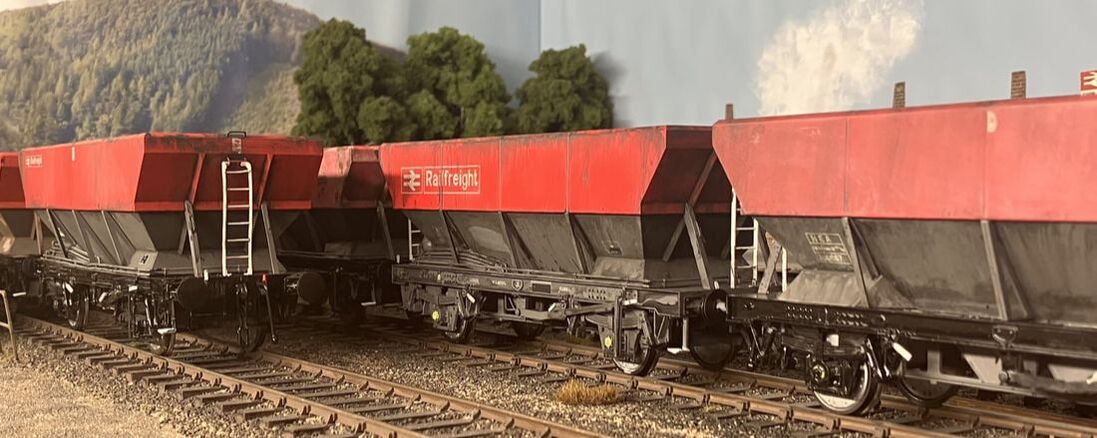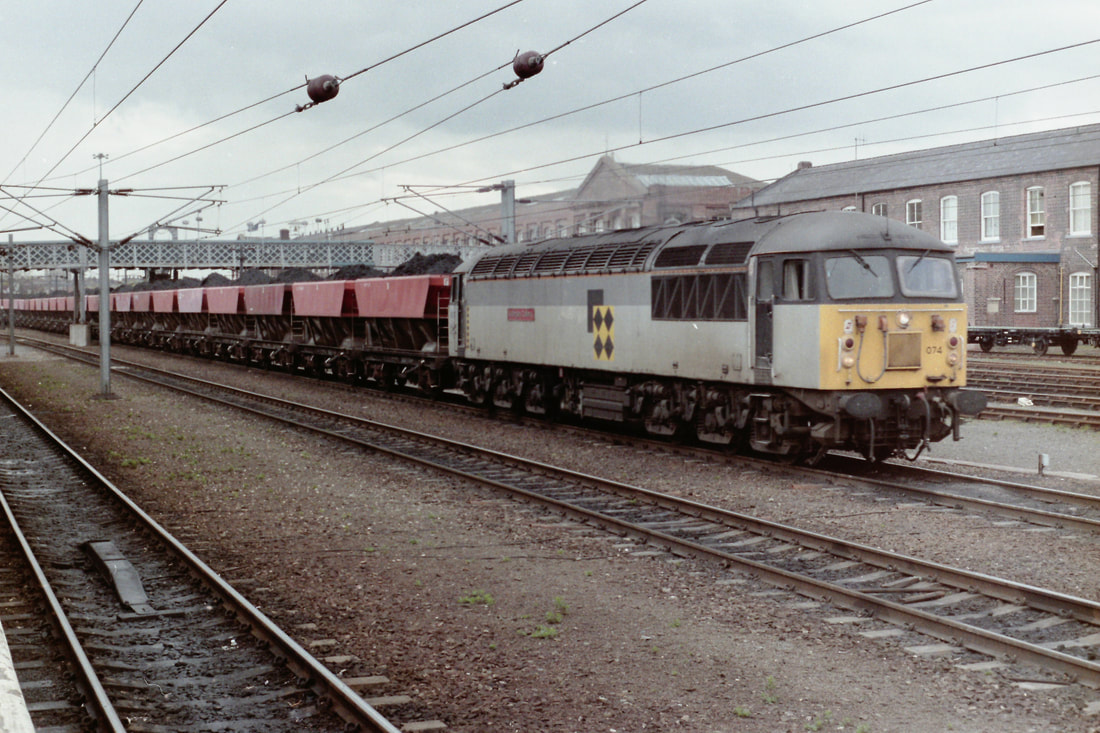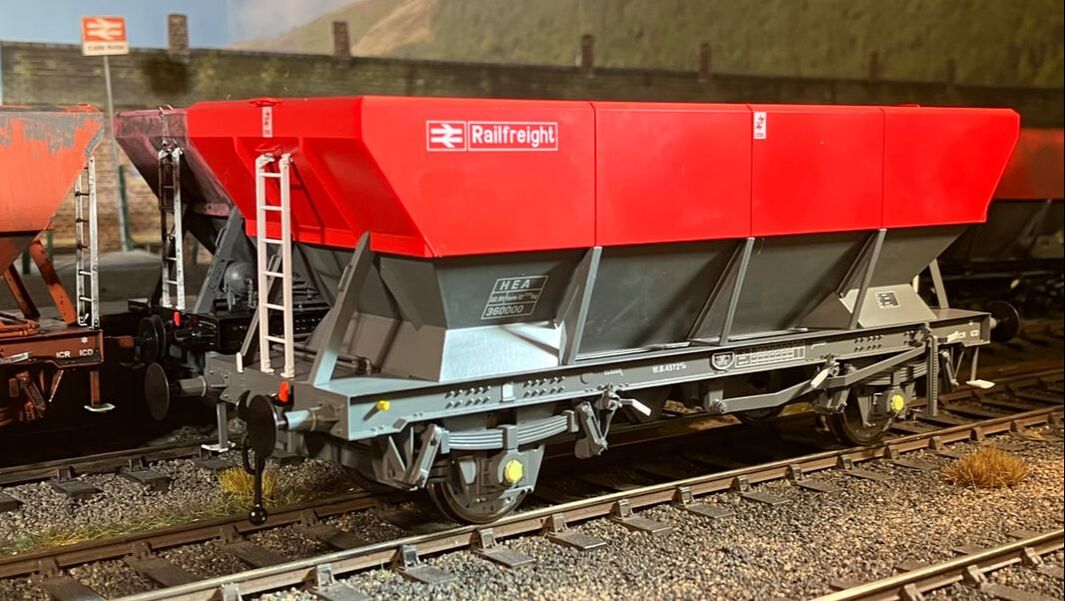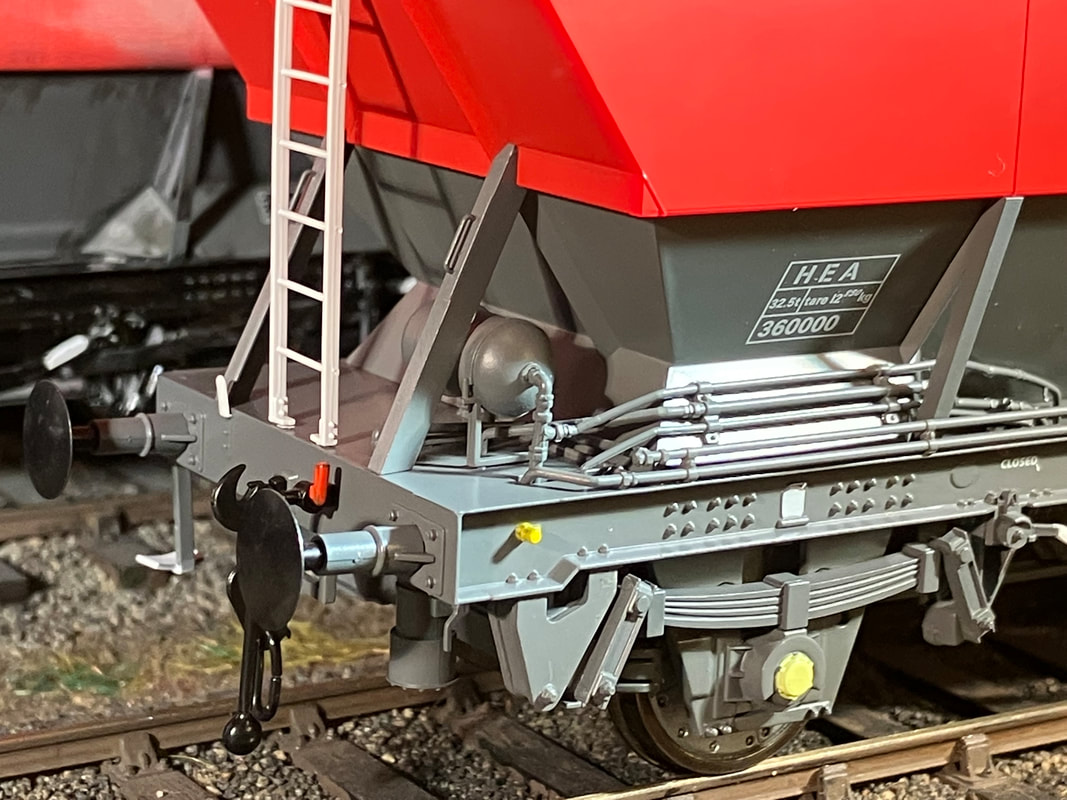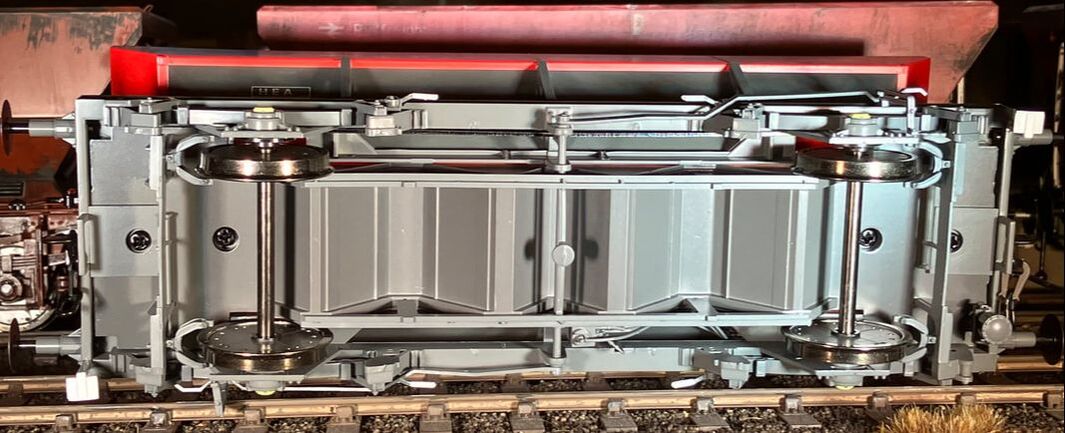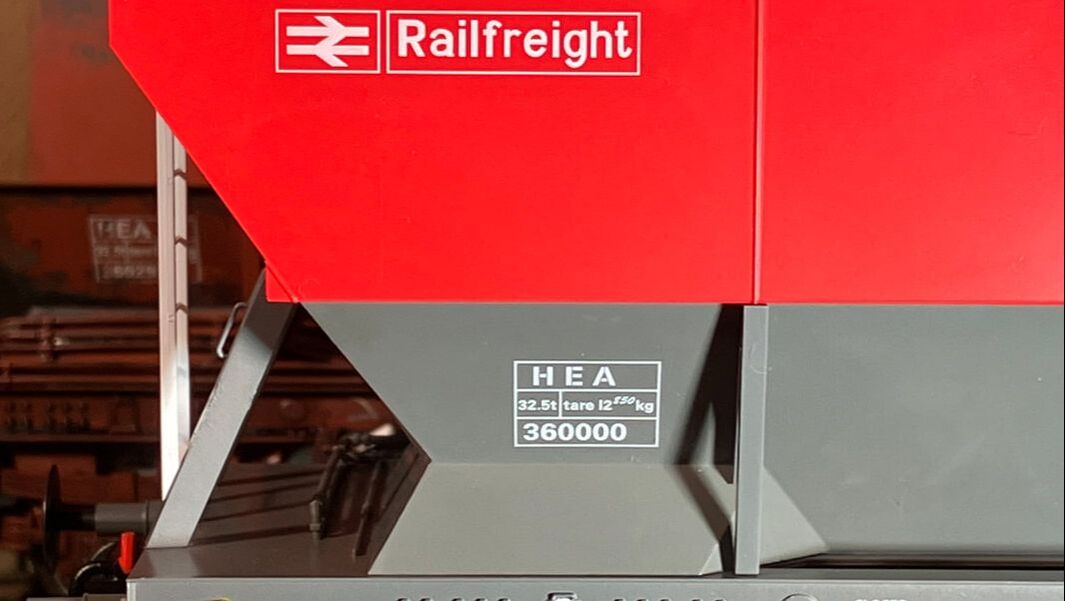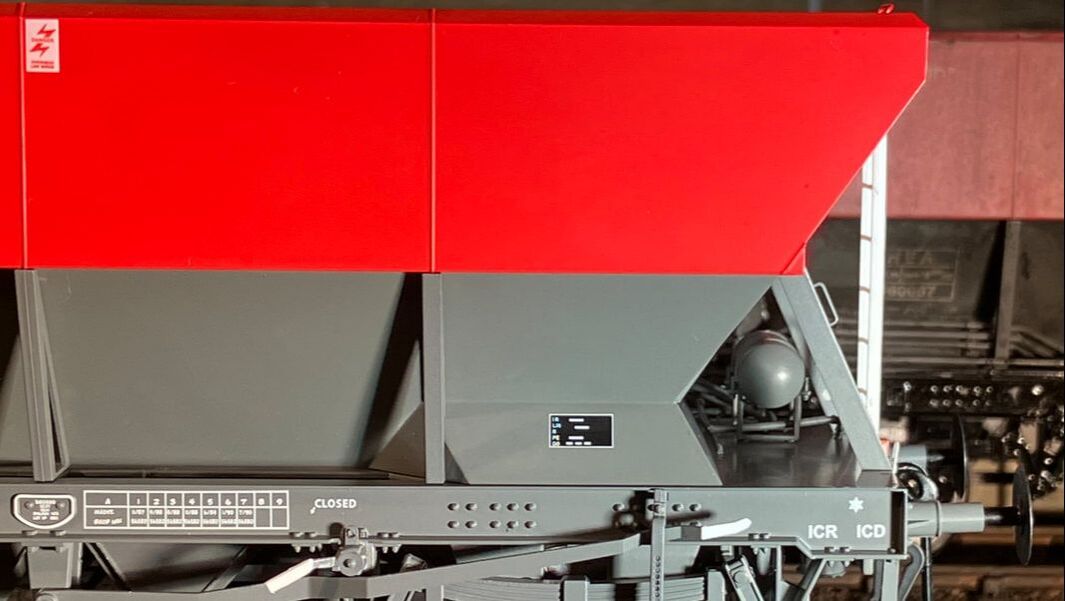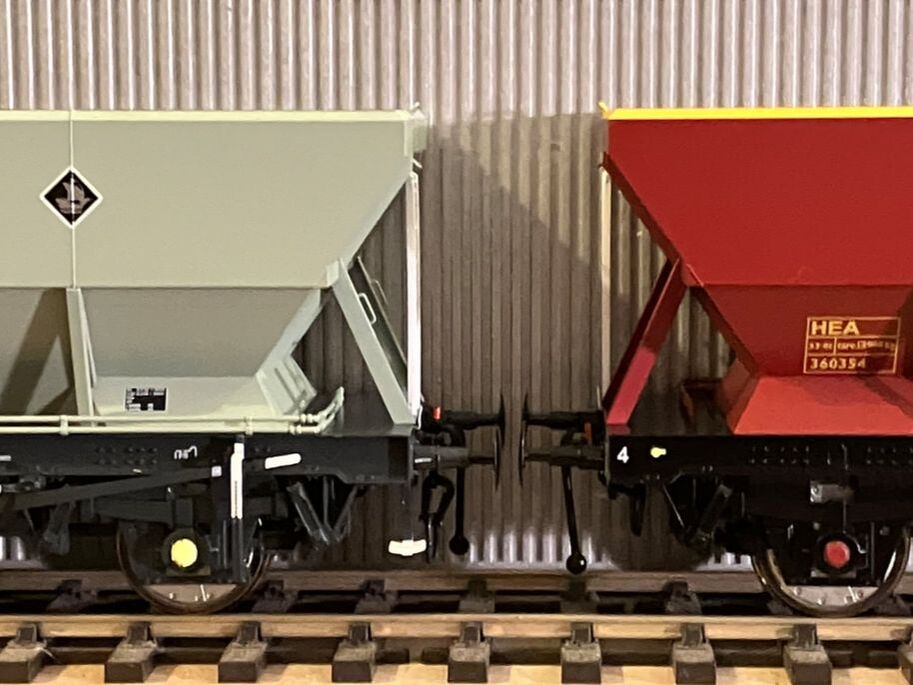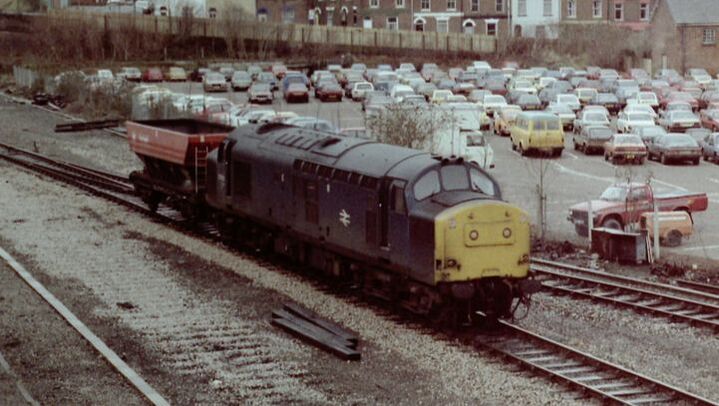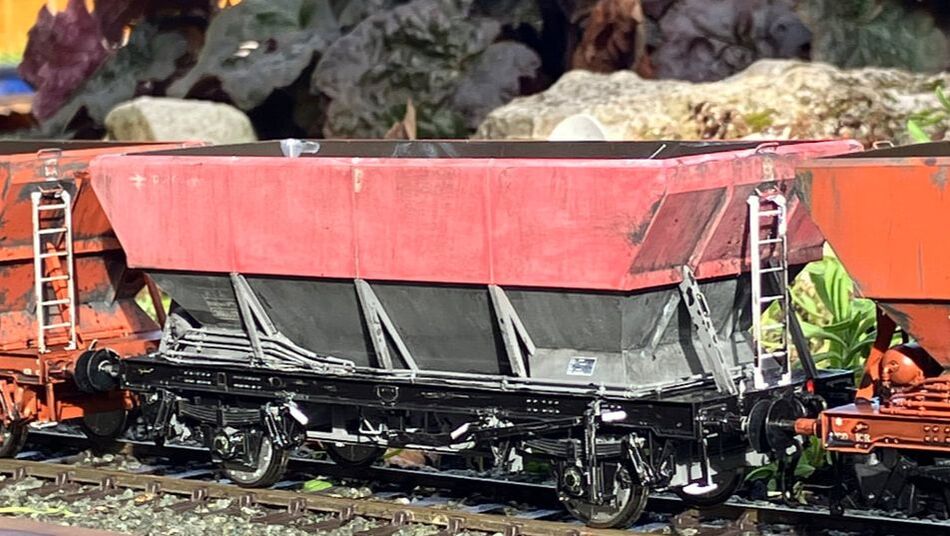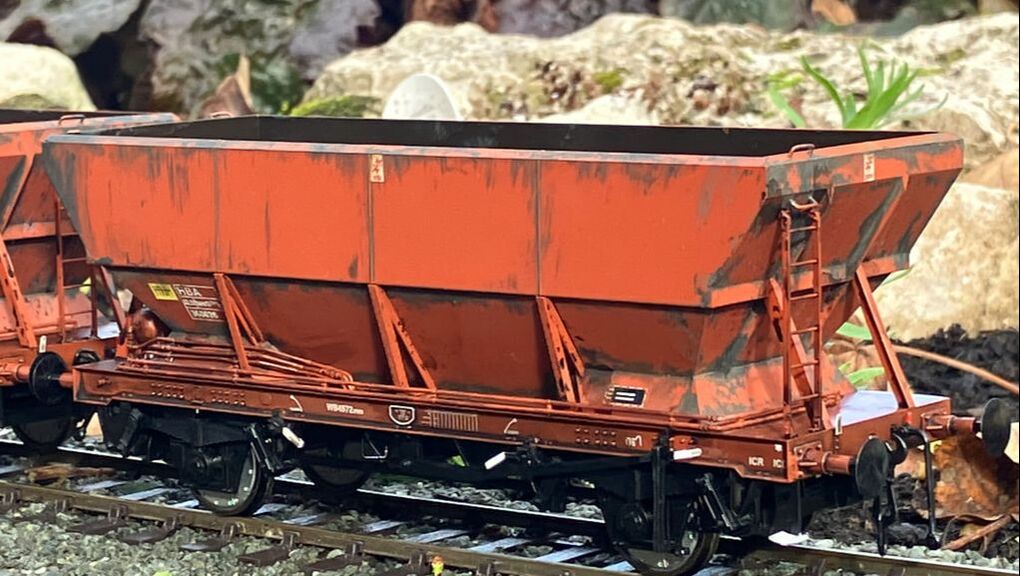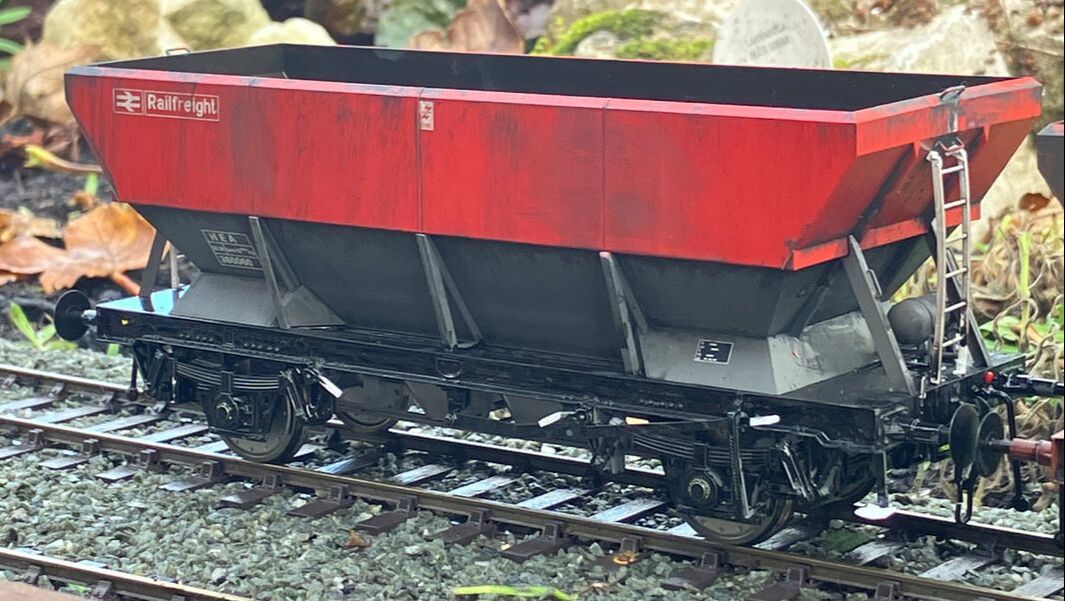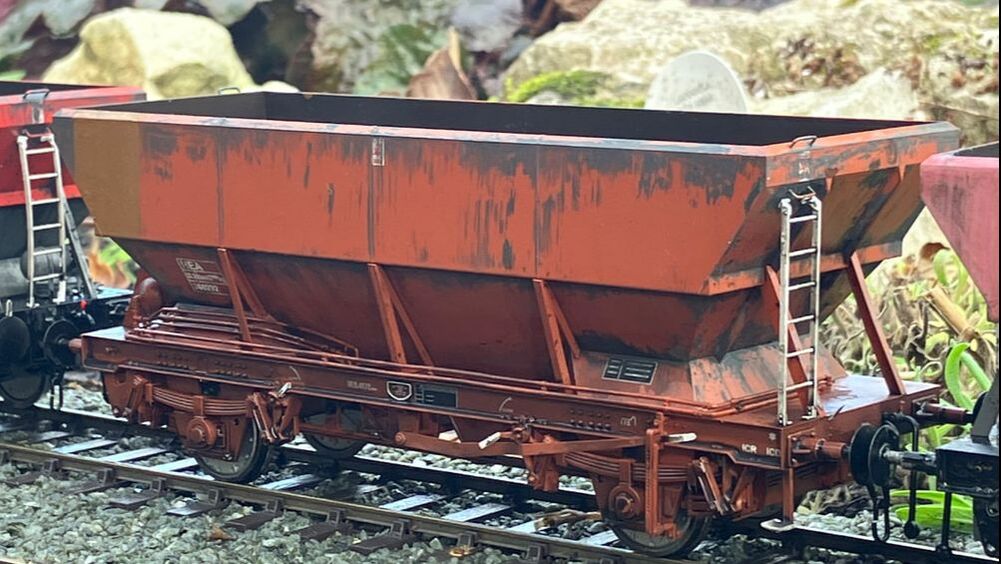37692 Exeter Central 200287 05.25 Abercwmboi - Exmouth Junction. Image courtesy of Alan Tait.
Dapol HEA/HBA wagons.
Given conversations with other 7mm modellers in recent months, this wagon has been eagerly awaited by Modern Image Modellers. Dapol announced the wagons production a number of years ago, but finally it’s here, so what’s it like?
A Brief History.
In 1975 the 32.5t HBA wagons were introduced by BR to help remove the ageing fleet of vacuum and non-fitted coal wagons in domestic/non-power station coal/coke operations, all wagons were built at Shildon in the North-East. Numbered from 360000 series it was planned to build 2000 vehicles. When construction was completed in 1979 there were 1998 completed examples of HBA in the fleet. The frames for the last 2 wagons were diverted to the prototype MFA scrap wagons.
Unlike the previous HAA hoppers, the HBA used a welded steel hopper rather than galvanised riveted steel body held in a cradle. The HBA/HEA also had manually operated discharge doors with release from below the sole bar rather than above. Initially painted in standard all over Bauxite Freight Livery with a centrally fitted end ladder. At some point during production the ladder was moved to the left-hand side end for operational reasons. We have found evidence of wagons up to 360208 carrying the central ladder and from 360227 with the side ladder, therefore the change must be somewhere between these vehicles. Following an operational incident the ladders began to be completely removed but retained the hand loop on the top of the hopper. Some examples survived to their end with the ladder still attached.
Initially HBA’s were limited to 45mph, but with a change to Bruninghaus springs and damping systems from the early 1980’s this was increased to 60mph and TOPs the classification was changed to HEA. This modification was then retrofitted to many, but not all of the earlier built wagons. All HBA’s had been converted or withdrawn by 1986. The HBA label was then applied to reworked HDA hoppers from the HAA family.
Unlike the previous HAA hoppers, the HBA used a welded steel hopper rather than galvanised riveted steel body held in a cradle. The HBA/HEA also had manually operated discharge doors with release from below the sole bar rather than above. Initially painted in standard all over Bauxite Freight Livery with a centrally fitted end ladder. At some point during production the ladder was moved to the left-hand side end for operational reasons. We have found evidence of wagons up to 360208 carrying the central ladder and from 360227 with the side ladder, therefore the change must be somewhere between these vehicles. Following an operational incident the ladders began to be completely removed but retained the hand loop on the top of the hopper. Some examples survived to their end with the ladder still attached.
Initially HBA’s were limited to 45mph, but with a change to Bruninghaus springs and damping systems from the early 1980’s this was increased to 60mph and TOPs the classification was changed to HEA. This modification was then retrofitted to many, but not all of the earlier built wagons. All HBA’s had been converted or withdrawn by 1986. The HBA label was then applied to reworked HDA hoppers from the HAA family.
|
56074 Doncaster 06/04/94. Image courtesy of Alan Tait.
|
With domestic coal traffic in decline from the early 1980’s, many wagons were re-allocated to other roles including carrying rock salt, scrap and acting as Nuclear Flask Barrier wagons (in both original design and converted to flat wagon states). The Nuclear Flask Barriers were recoded as RNA keeping their original numbers. Many underwent the quick conversion to carrying scrap metal and coded as HSA’s. These wagons had a welded level floor added inside the hopper above the bottom door, but externally looked almost identical to the HEA. A large number donated their chassis to the MEA rebody program and became box wagons. In the late 1990’s a number were fitted with fabric cover and coded as CEA's.
|
The Model
|
Dapol have produced a finely moulded well detailed model. In most parts details are crisp with plenty of extra detailing parts. The HBA released in Bauxite and has the original spring and damper suspension design, with HEA version carrying Bauxite, Railfreight Red and Grey, Transrail, Mainline & EWS liveries is fitted with the Bruninghaus style suspension.
|
|
The construction techniques used in these wagons means that the springs can be easily removed and can be interchanged. This would modellers to mimic the HEA carrying the Bruninghaus suspension with the Bauxite livery. This feature means that conversion from HBA to HEA could be a as simple as swapping out these spring mouldings subject to spares being available. A simple job done in a few minutes.
|
|
At the drawbar end, instanter couplings, lamp irons, sprung buffers and air pipes are found. These air pipes are unfortunately not so accurate a representation of a single standard air pipe and would benefit in replacement with a better representation. Buffers are neatly designed and appear to be the same as those fitted to the previous HAA wagons. The brake distributor and pipe work are carried above the sole bar deck at one end. Hand Brake leaver is neatly moulded, as are the hopper release handles.
|
The hopper bays and interiors are well represented would easily convert with a minimal work to the scrap carriers with the insertion of a suitably sized piece of plasticard. The wheels are modelled with the moulded brake disks on the wheel faces like the prototype and the previous HAA models.
Lettering and numbers are crisply printed and applied across the range. With two different styles of the Railfreight lettering and positioning on the hopper body available on the Railfreight versions.
Conclusion
Although the HEA has been available as a brass version for some years, this model is a welcome addition to the Ready to Run market. Overall the build quality appears to be good with no loose bits rattling round in the box on the two I had been loaned for this review.
The only issue of note is the poor representation of the brake pipe and the fact they were originally built with the dual pipe system dating these wagons to a much later period & making the HBA incorrect. It is also a shame that Dapol have chosen in the initial run to only produce the Railfreight liveried wagons in the central ladder configuration. All eight Railfreight wagons produced (2x general release & 6x Tower Models Ltd editions) have the central ladder fitted, it is however possible to see where the holes should be on the wagons for the side ladder fitted versions so intrepid modellers will, I am sure, be moving the ladders to represent later versions. I expect that further runs of what I believe will be a popular wagon will be forthcoming in the next few years, hopefully with Railfreight wagons being of the side ladder configuration.
The only issue of note is the poor representation of the brake pipe and the fact they were originally built with the dual pipe system dating these wagons to a much later period & making the HBA incorrect. It is also a shame that Dapol have chosen in the initial run to only produce the Railfreight liveried wagons in the central ladder configuration. All eight Railfreight wagons produced (2x general release & 6x Tower Models Ltd editions) have the central ladder fitted, it is however possible to see where the holes should be on the wagons for the side ladder fitted versions so intrepid modellers will, I am sure, be moving the ladders to represent later versions. I expect that further runs of what I believe will be a popular wagon will be forthcoming in the next few years, hopefully with Railfreight wagons being of the side ladder configuration.
|
Overall, if you model the British Railway network from 1975 onwards, the HBA/HEA is an ideal addition to many modellers fleets. Seen across the country from the West of England to the Highlands of Scotland in block or mixed trains of anything between one and forty wagons depending on the period modelled.
With many suppliers currently offering these wagons for around £50 or less these wagons offer great value for money and with a little weathering make an excellent addition to anyone's fleet. |
37162 Exeter Central 060287 13.15 Exmouth Junction - Abercwmboi. Image courtesy of Alan Tait.
|
Proudly powered by Weebly
